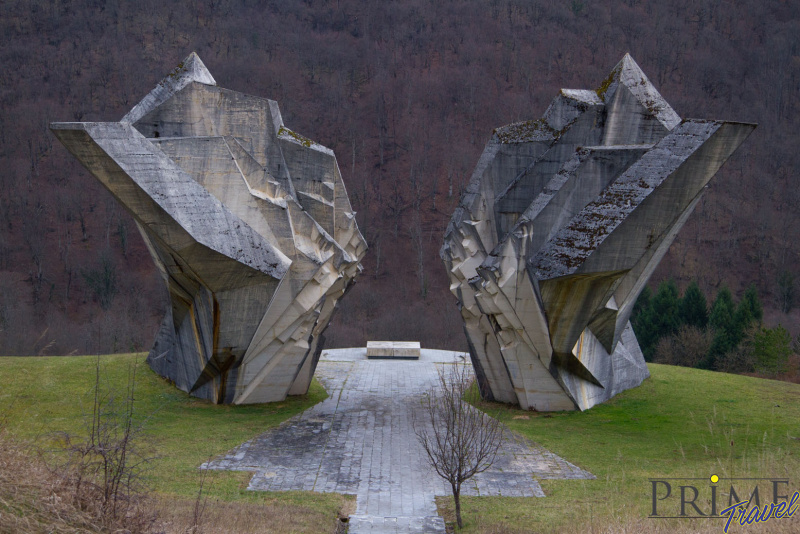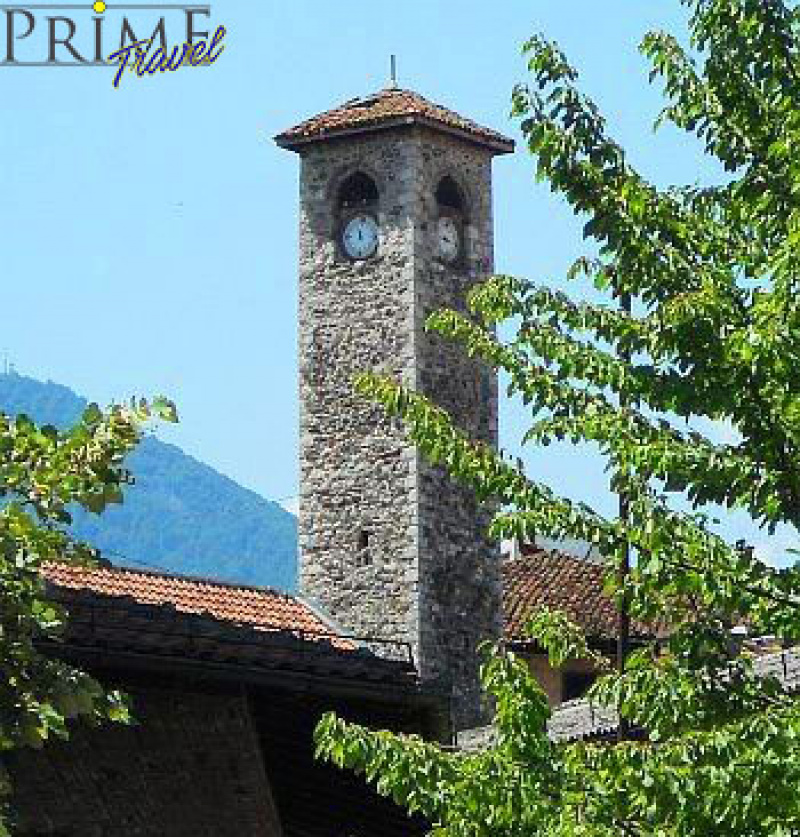










Price: Contact us
In the Middle ages Foca is mentioned written under various names like Choco, Cocco, Choza, coce, Chozza, Coza, Chotza, Hoca, Hotča. In July 1444 it is referred to as Hotča (written in Hotča), as well in August 1467 (in Hotča). It is assumed that the name of Hoca and Hotča comes from the personal name Hotkja which has its roots in the verb HOTJET.
Foca is located on the right bank of the Drina river, at the confluence of the river Ćehotina into the Drina. It is the center of the wider area of agricultural protection and a rich network of roads. Through Foca passed the famous Dubrovnik road (Via Drina). The importance of passage through Foca is marked by the fact that on one occasion the road was so called (Via Coze). This is the basis on which develops medieval Foca as market and caravan station.
Foca appears the first time in sources on 8 February 1366. According to many, Foca in the composition of medieval Bosnia enters after the collapse of the Serbian regional ruler Nicholas Altomanović 1373.
Sights you can visit in Foca:
Sutjeska National park
Sutjeska National Park (NPS) is located in the wooded, mountainous area, in the southeast of the Republic of Serbian, on the border between Bosnia and Herzegovina and Montenegro.
National Park Sutjeska is the oldest and largest national park in BiH, for its natural values and beauty he is the pearl of Bosnia and Herzegovina. It covers an area of Sutjeska with strict reservation of Perucica, parts of mountains Maglic (2386 m the highest peak in Bosnia and Herzegovina), Volujak, Vučeva and Zelengora. Thanks to the extraordinary natural values and their preservation NP Sutjeska is listed in the Category II of IUCN in the year 2000 (UN Department for the Protection of Nature and Natural Resources).
Sutjeska National Park is the most diverse complex ecosystem in Bosnia-Herzegovina and one of the most diverse in the region of Southeast Europe. The whole area of the park is characterized by exceptional beauty and diversity of the forms of the landscape - from mild valleys woods, mountain pastures to the high mountain ranges. On Zelengora there are eight glacial lakes "mountain eyes", but what also characterizes this area are deep canyons of Sutjeska, Hrčavka and Jabucnice, clear mountain rivers rich with trout. It is very valuable and has a rich collection of wildlife and rare plant species, many of which are endemic. In the heart of the Park there is a strict nature reserve Perućica (1434 ha), the best preserved and the largest forest in Europe, where from the establishment of the national park strictly is prohibited any intervention of man.
In the area of national park Sutjeska there are numerous monuments of older and more recent history.
Sand pyramids
On the ninth kilometer of the old road Foca - Miljevina - Sarajevo (on the right side), in Pirni Do, there are sandy pyramids. A masterpiece of nature!
A long year series of soil erosion of aggressive loop frosts, summer heat, rain and strong winds made the sand pyramids. Sculpted figures of interesting shapes are similar to those in Colorado (USA), Dolomites (Italy) and Devil's Town (Serbia). The rutted sand pillars rising from its broad foundation and narrow toward the top constitutes an extraordinary geomorphological rarity in these parts. The process of erosion continues today, so that they do not disappear, they are constantly growing.
According to the travelogues writing and the geographer Dragutin Deroko there are thesis that these pyramids are over two hundred years old. In fact, during his first visit to the pyramids in 1936 in a conversation with the locals he came to the conclusion that these pyramids have been always there.
Aladza mosque
Aladza Mosque (Colorful mosque, mosque Hasan Nezir) was built in 1549 in Foca and falls into the category of major mosques and the first mosque in Bosnia and Herzegovina that was built in a classical Ottoman style. It was built by a close associate of Mimar Sinan, and its greatest value is that all other mosques were built relying on the idea of Aladza mosque. Aladza mosque was one of the most important architectural creations, and was one of the best-proportioned buildings, the building had originally preserved interior decorations, which from the beginning attributed to extremely high symbolic value. The ensemble has been extremely valuable, the fountain were preserved, part of the surrounding wall and later built drinking fountain in the courtyard wall.
Aladža is included in the cultural heritage of Bosnia and Herzegovina and to the list of World Heritage Sites by the UNESCO.
Musluk mosque
Atik Ali Pasha Mosque is located in Donje Polje in Foca. To the nation it is known as Musluk mosque, and it was built by Atik Ali Pasha in 1546. It was built of stone, with stone mahfil and mimber. She had a slender minaret built of tufa. Next to her was abdesthana, gasulhana and a smaller mekteb.
This mosque experienced various torture during the history - In World War II the Italian army changed the inside of the mosque into a Catholic church called "Santa Barbara", and for a while it was used as a barn.
It was renovated in 1973, later it was set on fire on 24th April 1992 were its minaret was destroyed.
On the former mektebs location a commercial and residential building was built that becomes the new headquarter of the Islamic association Foca.
Musluk mosque was declared as a national monument by the Commission to Preserve National Monuments of Bosnia and Herzegovina, and has been restored in its original form.
Clock Tower
The oldest saying of the existence of a clock tower in Bosnia and Herzegovina is related to Foca. In the middle of Foca in the old town, a Clock Tower is built as a measure of time and transience. It was founded by Mehmed-pasha Kukavica, who was born in Foca. The registry records show that it was built in 1758 as a sign of loyalty and gratitude to the people. Today is the clock tower a symbol of the city. Dubrovnik principality donated the shopping center in Foca the first clock mechanism in September 1493, the clock mechanism was kept till the construction of the clock tower, the same was built in it as a measurer time and transience. Clock - tower was built of stone nežbukanog in the form of rectangular prisms, is 20 meters high and covered with tent roof.
Her basic is a quadrangular dimension of 310 x 320 centimeters. Entrance in the tower is a three feet hight metal door, and the wooden steps lead to the clock mechanism. Watches are placed under the roof of the tower and they are turned on all four sides. Every half hour the clock advertise with one gong stone, while a full hour is marked with appropriate numbers of gong stone. In the seventies of the last century the clock has stopped working. In one project idea states that the same clock should be corrected and the Clock Tower restored so that it could continue its work, to the delight of locals and visitors of Foca.
Saint Sava Temple
Based on many years of wishes Orthodox believers from Foca for a new Orthodox church, donor evenings and donations raised funds for the construction of the same, which started in 2006. The temple is located in the city center, on the right bank of the river Ćehotina.
It occupies an area of 1500 m2 and is one of the largest buildings of the Serbian Orthodox Church in the Republic of Serbian.
The temple is roofed, the vault is covered with copper sheeting, bells and crosses were placed, and is built of natural stone, limestone caves and materials.